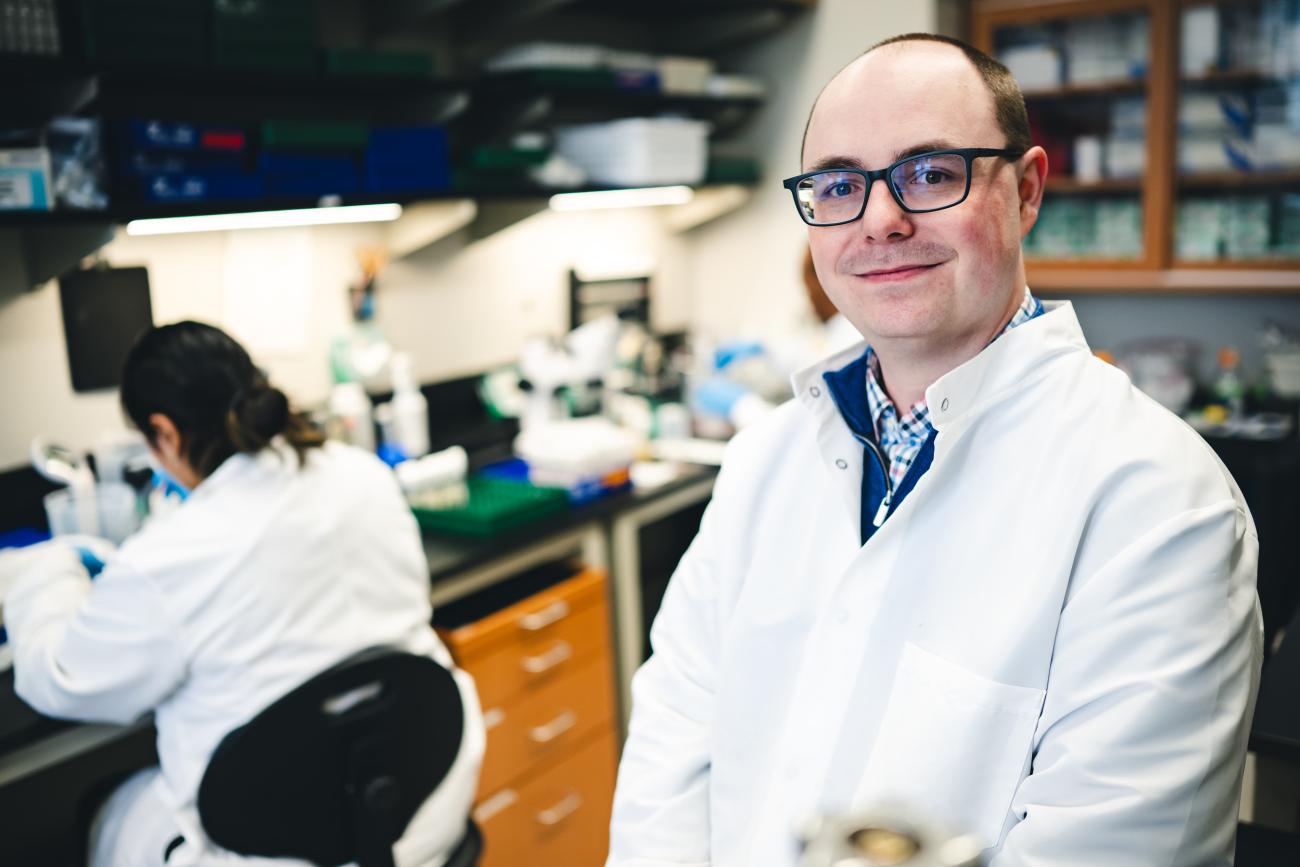How One Bacterium Is Changing Disease Control
Microbiologist Dylan Shropshire studies Wolbachia's potential to fight mosquito-borne diseases worldwide.
Dylan Shropshire didn’t set out to become a microbiologist. As an undergraduate student studying insect behavior in Tennessee, he worked with flesh-feeding flies—critters he raised on rotting beef liver, no less. But while studying the flies, he began thinking about how the microbes in that complex environment might influence the lifestyle of the fly.
When it came time to consider graduate school, Shropshire was drawn to microbiomes and aimed to join a lab focused on this area. That curiosity led him to a doctoral program at Vanderbilt University, where he was introduced to Wolbachia, a type of bacteria that lives inside the cells of its insect hosts.
Wolbachia does some incredible things, says Shropshire, assistant professor of biological sciences. The bacterium defies easy classification. It’s neither strictly a parasite nor a mutualist. Instead, it inhabits a fascinating biological gray area, with the ability to manipulate its host’s reproduction, suppress pathogens, provide nutrients, and influence entire populations—all while being maternally transmitted from one generation to the next.
The real-world stakes of understanding Wolbachia are high. In 2010, Wolbachia-bearing mosquitoes were first released in Australia to curb dengue transmission. Since then, Wolbachia levels have remained above 90 percent, and virus transmission has plummeted. Similar releases are now underway worldwide to combat dengue, Zika, Chikungunya and other diseases.
But as Shropshire points out, it took three years and a 0.125 percent success rate to move Wolbachia from the humble fruit fly into Aedes aegypti mosquitoes. Some releases also fail because the traits that help them spread aren't strong enough. Shropshire and his team work with fruit flies using the same Wolbachia strain used in public health efforts. Their goal? To understand the genetic, cellular and ecological underpinnings of the microbe’s behavior so interventions can become more effective—and efficient.
“We’re trying to understand how Wolbachia acts in nature so we can improve the way we use it to protect humans from disease,” he says.
Shropshire’s lab is focused on one overarching question: How do certain bacteria become common? This breaks down into several sub-questions, including how they spread across species, through populations, and within individuals. The lab also develops better tools to study these systems. All this research supports broader public health goals, such as improving the use of Wolbachia to control disease.
The lab’s work spans multiple fronts. One area investigates how Wolbachia escapes one host and colonizes another. That means studying how the bacteria exit cells, survive in the environment, find a new host and migrate to reproductive tissues—all essential steps to reestablish maternal transmission in a new host.
On another front, the lab explores how Wolbachia manipulates its host’s reproduction. The bacteria congregate in the ovaries of insects. As eggs develop, Wolbachia hitches a ride into the next generation. If the offspring is female, the process repeats. If the offspring is male, it becomes a dead end for the bacterium. This conflict has led Wolbachia to evolve a reproductive trick called “cytoplasmic incompatibility,” in which diseased males cause embryos from uninfected females to die. This gives Wolbachia-bearing females a reproductive advantage and helps the bacteria spread. But sometimes this manipulation is weak, few embryos die and the bacteria fail to spread. Shropshire’s lab aims to understand why.
Because Wolbachia can’t be cultured outside host cells, traditional microbiological tools don’t work. But fruit flies, with their rich genetic toolkit and research history, provide a workaround. Shropshire’s team can inject Wolbachiagenes into the fruit fly genome, clear the flies of natural Wolbachia, and study the effects of the “transgene” on host biology.In a recent study, the team also developed molecular tools to measure rare Wolbachia without the assistance of standard microbiology techniques.
“Our goal at this stage is to pave the way and build a foundation for answering each of those questions,” Shropshire says. “But then we really want to get into reductionist biology. We want to know the entire pathways involved in each of these different processes so we can use that information to understand why Wolbachia is the world’s most common animal-associated symbiont and improve tools for vector control.”
Wolbachia’s potential is enormous. Insecticides are often untargeted, killing not only pests but also many other species. In contrast, Wolbachia can be used in select species to control specific diseases, with remarkable success rates.

